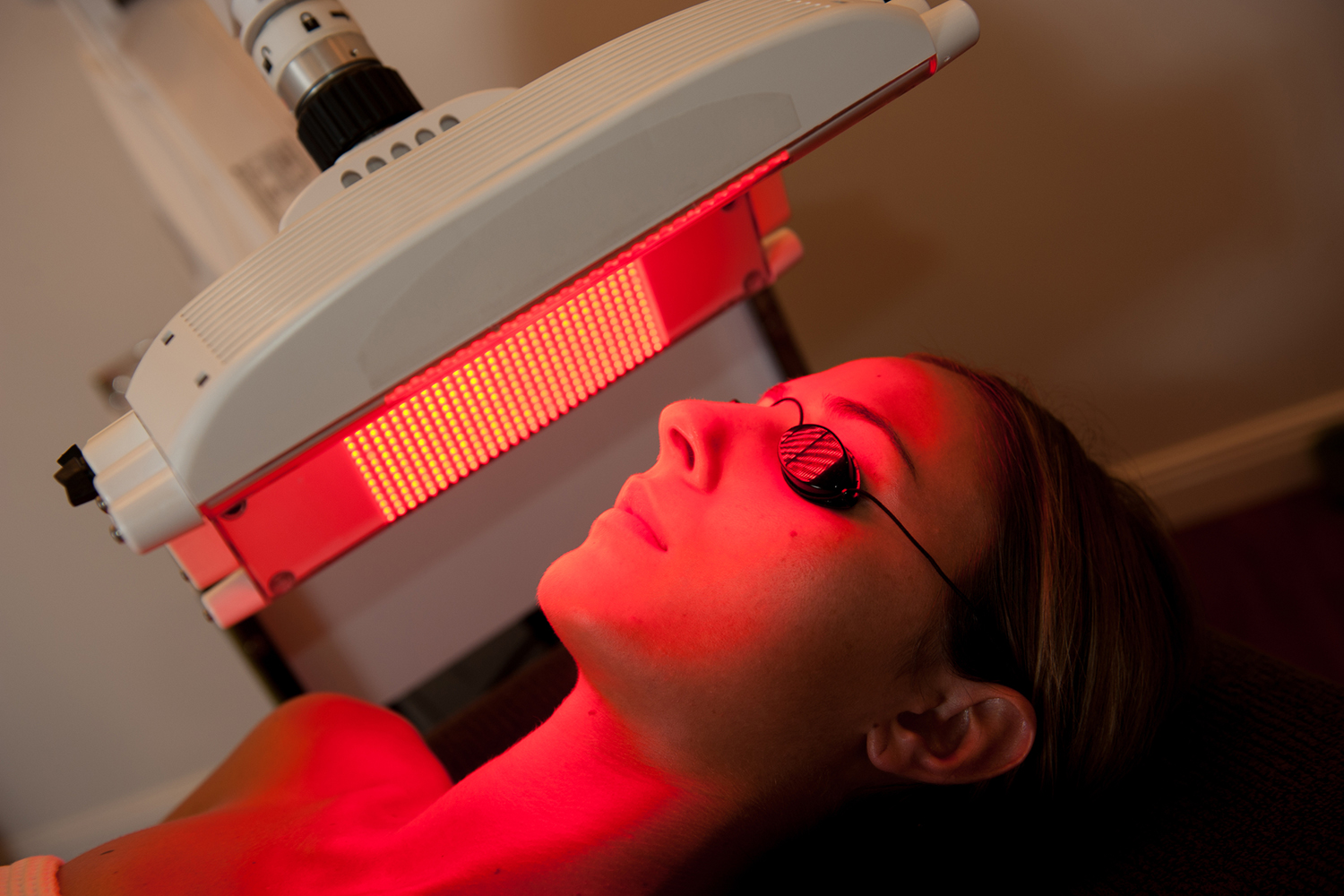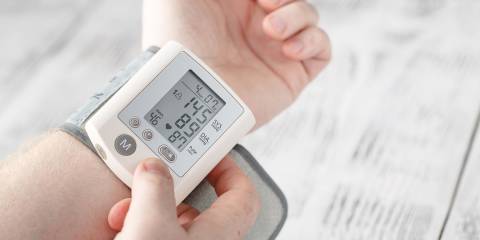Perhaps you’ve seen them? Futuristic looking masks embedded with LED lights that wrap around the face like a bewitching Halloween costume.
The thrills don’t stop there. Spiffy ball caps are encrusted with neon red lights to boost blood supply to the scalp and increase hair growth.
Not interested in wearables? Ergonomically designed handheld wands and spheres deliver red light therapy for skin conditions, anti-aging benefits, pain management, and wound healing.
High-level professional results from red light devices can even be sought after in day spas, wellness centers, doctor’s offices, gyms, and tanning salons.
There’s no doubt red light therapy is having its day in the sun. But fear not, this therapy won’t give you ultraviolet (UV) light damage.
Around for some time, red light therapy is now exploding in popularity. Endorsed by celebrities, pro athletes, and social media influencers, it’s still considered an emerging treatment—although one that’s generating a lot of interest.
What Is Red Light Therapy?
Commonly referred to as phototherapy or photobiomodulation, red light therapy is a therapeutic technique that uses low-level wavelengths of red light to penetrate deep into the skin’s dermal and subcutaneous layers to target cells at their source.
What Does Red Light Therapy Do?
In the 1960s, lab experiments revealed that red light encouraged wound healing and hair growth. Today this therapy treats skin conditions like stretch marks, scars, acne, psoriasis, wrinkles, age spots, and fine lines. It can also improve skin texture and alleviate skin redness.
Not just for the skin, red light therapy can possibly target a reduction in body fat. It can also help increase blood flow.
Studies indicate that red light therapy can boost short-term treatment of carpal tunnel syndrome; improve hair growth in those with androgenic alopecia; reduce neuropathic pain; promote wound healing and tissue repair; relieve pain and inflammation in the Achilles tendons; reduce psoriasis legions and burn scars; and lessen myopia progression.
Studies on red light therapy offer promising results. But larger-scale studies and more research is needed to confirm effectiveness.
How Does Red Light Therapy Work?
Exposure to red light can provide a beneficial biochemical effect in the cells, helping to strengthen mitochondria where the cell’s energy is created. Red light therapy assists with this process by increasing oxygen consumption, electron transportation, and adenosine triphosphate (ATP) levels.
The end result is cells that are able to function more effectively. This allows them to repair and rejuvenate, increasing the body’s natural ability to regain and maintain vitality. With this increased energy, other cells can work more efficiently and help the body with repairing skin and boosting new cell growth.
How often and how long to use red light therapy depends on the device. Those found in professional settings are significantly more powerful than home options.
A typical approach for a home device is to use as directed, or at least 3 to 4 times a week for a minimum of 6 weeks to see results.
A number of sessions may be needed to notice effects. If you’re looking to firm facial skin, it can take up to 3 months of regular treatments. But even one simple 10-minute session can be enough to see a reduction in inflammation.
Generally safe and painless, and a preferred method over lasers, the light source used in red light therapy is nonthermal and nonablative.
Reality Check on Red Light
A 2018 study suggests that red light therapy can help lessen painful side effects from cancer treatments. However, a 2019 research review adds that red light therapy can increase cancer cell aggression and tumor recurrences. Those with cancer or a history of the disease may want to avoid red light therapy. Do not use red light therapy over metastasized tumors.
Although safer than traditional laser therapy, proper eye equipment must be worn to protect the eyes when using red light therapy. Do not look directly at the red lights, as they may cause damage.
Some have reported burns, blistering, and lesions from red light therapy units, especially if they fall asleep with a unit on, or if the equipment is damaged. When using at-home red light therapy, be sure neither the device nor your skin overheats. If the light wavelengths create too much heat, this can cause pigment-producing cells in the skin to dump more melanin. The end result can be unwanted hyperpigmentation.
Keep in mind that when red light therapy products are misused, damage to the skin and eyes can occur. Long-term safety on these devices is unknown.
Home v. Professional Units
Devices designed for at-home use tend to be less powerful than those operated by trained professionals, so results can vary. Not all red light therapy is created the same, so do research before purchasing a device.
If budget allows, you may want to consider a professional-grade device for home use. Inexpensive and non-regulated devices can be ineffective, break down, or stop working altogether.
Be sure the unit you purchase has been tested for safety. An FDA-cleared device can help ensure safety, efficacy, and results. These devices are available online or through a specialist’s office.
Most insurance companies do not cover red light therapy. If yours won’t, reach out to a red light therapy practitioner’s office. Ask if they can offer a reduced rate or other payment options.
Finally, dermatologists stress that red light devices are not to be used in lieu of effective skin care routines. In other words, you still have to wash and moisturize your face.





